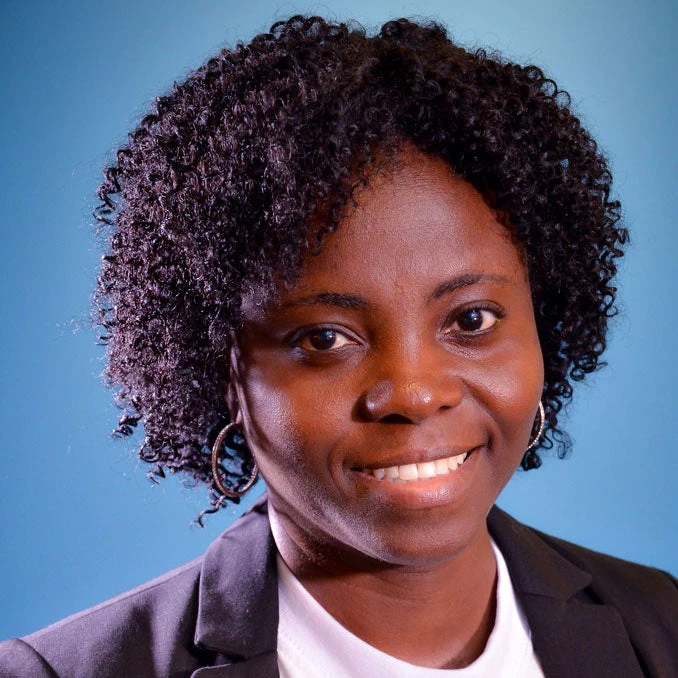
in the virology laboratory at Sokoine University of Agriculture.
Also available in Francais | English
The future of Africa will be shaped by two dynamics. First how well its leaders prepare for the fastest population growth rate in the world. And second, how well they do in creating the right opportunities for its young citizens. Africa is projected to become home to 1.7 billion people with more than half of that population under the age of 15 by 2030. Although it is a huge challenge, it offers an immense opportunity for the region.
Most economies across the globe are becoming increasingly technology-based and digital, where for example, through ICT tools (Artificial Intelligence and machine learning), efficiency and productivity are greatly enhanced and services improved across various sectors. How is Sub-Saharan Africa (SSA) keeping up with these technological advances and leveraging them for its development transformation? Although there are pockets of success, more needs to be done.
The quality and relevance of higher education across the African continent needs to improve to inspire creativity, innovation, critical thinking and problem solving, particularly in the applied sciences, engineering and technology fields. This challenge is daunting and requires a collective effort led by African leaders.
The Regional Scholarship and Innovation Fund (RSIF) which is implemented under the Partnership for skills in Applied Sciences, Engineering and Technology (PASET), is an example of such an initiative. Led by African governments, it is designed to offer competitive PhD scholarships to some of the brightest young scholars on the continent to undertake applied scientific research in several thematic areas in select African universities, and providing them the opportunity to participate in a “sandwich program” in an institution abroad. These scholars are expected to develop new knowledge, innovative products and processes and adapt existing technology in solving critical development challenges while also acquiring leadership skills.
This summer, the first cohort of 16 scholars from eight countries in SSA, have enrolled in the program, 4 of them are women.
One of the scholars, Sylvia Wairimu from Kenya, hopes to use her time as an RSIF Scholar to learn how biotechnology can help improve food and nutritional security in Africa. She is enrolled at the Sokoine University of Agriculture, in Tanzania, where she will focus on food security. I interviewed Sylvia to find out more about what she hopes to accomplish through her specific field of study.
Ekua: Sylvia, what is your area of specialization and how can it be applied using science, technology and innovation to influence development in Sub-Saharan Africa, now and post-graduation?
Sylvia: My area of study is biotechnology, in animal health. I believe it will help solve old challenges, with innovative approaches. I plan to focus my research on ways to improve food and nutritional security on the African continent. I hope to collaborate with other scientists, and give back to farmers, agricultural authorities and governments by offering my research for their use and application.
Ekua: How can your proposed research topic help improve food security in Africa? How do you hope to utilize the knowledge gained through your PhD training?
Sylvia: I hope to gain more skills and knowledge in “ribonucleic acid interference” (RNAi) and Clustered Regularly Interspaced Short Palindromic Repeats (CRISPR-Cas) as resistance mechanisms against animal viruses. I will be using RNAi and CRISPR-Cas to regulate expressions of specific viral genes in ruminants. I believe that using gene editing and silencing will become a long-term solution in the management and elimination of common infectious diseases, which have very devastating effects on food security in Sub-Saharan African countries. Gene editing in Africa is going to provide an alternative solution to increasing food production by outsmarting these pathogens.
Ekua: What is unique about the RSIF program that attracted you to apply? How is this program linked to your long-term goals of connecting science, technology and innovation to your specific field and in addressing pressing development challenges in Sub-Saharan Africa?
Sylvia: The RSIF program is unique because it focuses on promoting research in Africa. RSIF host universities are highly recognized institutions that provide first-class training in a high-quality research environment; and the supervision expectations are thorough. I see this initiative as a catalyst in training a highly skilled workforce while building an attractive environment for African scientists like myself to thrive and continue our research. Ultimately, we want to contribute to the scientific and technological breadth of skills and knowledge needed to transform the continent and make our countries globally competitive.
Like Sylvia, graduates of the PASET RSIF program are expected to either return to their host universities as teaching/research faculty; become researchers in government laboratories; work as professionals in various industries; or turn into entrepreneurs and set up their own businesses. As African governments increasingly highlight the need to build stronger homegrown workforce in the science and technology fields to maximize their demographic dividend, Pan-African initiatives like the RSIF have a critical role to play. Helping governments raise the quality, quantity and utilization of ASET trained faculty in their universities can mark a turning point in applied research outputs and undergraduate and post-graduate ASET programs, providing young Africans graduating from these programs with world-class knowledge and expertise.
This is only the beginning!


Join the Conversation